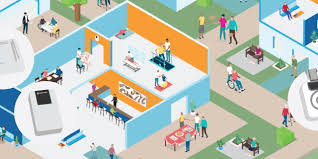Older adults can save tens of thousands of dollars annually by choosing assisted living communities over aging in place in their homes.
Unlike point solutions, Inspiren unifies resident safety, care planning, staffing, and emergency response into a single AI-powered platform.
An artificial intelligence-powered virtual assistant platform for senior living and care providers.
Betting that AI could lighten the clinician load.

 Moving in later can mean greater care needs, but same staffing levels. This article caught my eye – ‘
Moving in later can mean greater care needs, but same staffing levels. This article caught my eye – ‘ Some have said the concept of ‘AgeTech’ can be a bit depressing. It is especially bleak when you look at the startup portfolio which aggregates a variety of tech categories to help older adults in their later years,
Some have said the concept of ‘AgeTech’ can be a bit depressing. It is especially bleak when you look at the startup portfolio which aggregates a variety of tech categories to help older adults in their later years,  Strength-related tech for stronger women? With all of the digital health startups and corresponding
Strength-related tech for stronger women? With all of the digital health startups and corresponding